Occasionally when coins are minted (struck) they will be struck wrongly. Due to stringent checks especially for proof and gold coins, these errors are quite rare. A few years back many of these types of coins were looked down upon by collectors as being imperfect, now there are quite a few collectors that actively collect and look for error coins. Subsequently these factors have driven the price for major error coins up.
Just a quick note major error is basically a coin which falls into one of the types of errors listed below and they are much more visually obvious compared to minor errors. Minor error coins might not be worth much more then a standard coin of the same type but a major error should be worth a premium.
Before you read this next part, it is recommended that you read the section on how coins are made first. So that you will better understand the descriptions.
Error types:
Blank Planchet: Not perhaps an error per se but occasionally a coin is not struck and the blank metal planchet slips though the minting process. These blank “coins” are collected by some error collectors.
Broadstruck coins: When a planchet is fed into a coin minting machine it sits within a collar. This collar might have an inscription or design which will be impressed onto the edge of the coin when struck, the collar also helps the metal of the coin striking at its edges when struck (using huge force) and keeps the coin in shape. Occasionally the collar might be missing or the planchet might not be sitting in the collar correctly, if the plachet is then struck the coin will be out of shape and spread out at the sides, these types of coins are referred to as being broadstruck.
Brockage coins: Sometimes due to the enormous pressure used to strike coins a coin will stick to the top or bottom die. When the next coin is fed in to the press to be struck, the original stuck coin acts as a die and leaves an incuse design on the new coin. The newly struck coin will have a normal obverse and on the other side an incuse obverse OR a normal reverse and an incuse reverse. So in essence it will look like a double headed or double tailed coin but on side will be incuse and the legend (writing) on it will be back to front. Brockage coins are highly collected.
Clipped Planchet coins: As part of the minting process a sheet of metal is rolled thinly and then the coin blanks are punched out to later be struck as coins. A clipped planchet error occurs when a sheet is passed through incorrectly and is overlapping the previous strip. Then once the wrongly overlapping strip is struck it will produce a blank with a curved part missing. Once the coin is struck it will still retain this curved clip.
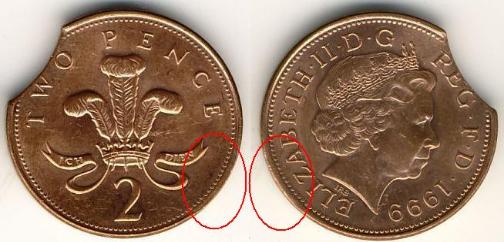
Picture Courtesy of Hus Sulo
The above picture also displays what is often referred to as the Blakesley effect. Once a clipped planchet is struck the opposite area of the clip often shows a weakness.
Straight Clip error:
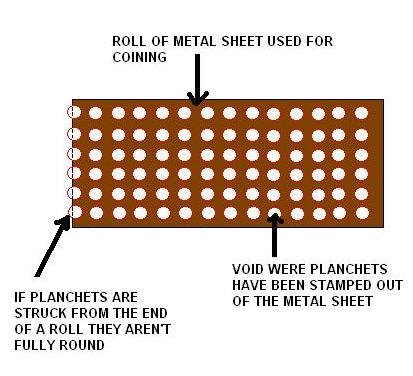
Picture Courtesy of Hus Sulo
 On a genuine error the detail nearest the clip should fade away. On a one which has been cut by hand it would just come to a sudden end.
On a genuine error the detail nearest the clip should fade away. On a one which has been cut by hand it would just come to a sudden end.
On the above picture near the rim,the beading and the letters near the edge you can see the detail fading. This would not happen if the coin was to be a post mint error and on one which has been cut.
Also on a genuine straight planchet error, on the clipped end, the planchet will be thinner then the opposite unclipped end.
Die Cap Error: A die cap, or capped die error takes place when due to the enormous force used while minting coin a coin sticks to either the upper or lower die. As subsequent coins are struck, the stuck coins edges spread around the die making it even harder to remove. Most often the minting press needs to be shut down and the coin removed manually. The coin will have raised edges and resemble the shape of a cap, hence the name. These types of errors are rare as once removed by most mint production rules, error coins should be handed in to be melted and re-struck up as coins, occasionally some of these errors slip through the system and out of the mint.
Double Struck error: Double struck errors appear on coins when once a coin is struck it does not eject correctly and is subsequently struck again. the second striking can be on any place on the coin. Occasionally a coin can be struck more then twice but these errors are even rarer. Most collectors prefer the second striking to be misaligned and noticeable and most prefer to be able to see the date struck twice as can be seen in the following example of a farthing coin.
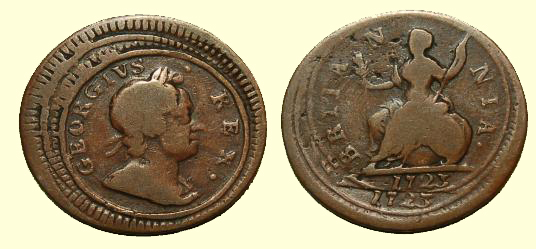
Picture Courtesy of Hus Sulo
Off Centre error: If a coin is miss fed into the collar and doesn’t sit right in prior to striking, in other words it isn’t sitting in its usual central position, when it is struck the design will now be off centre. The following sixpence is an example of an off centre error coin.
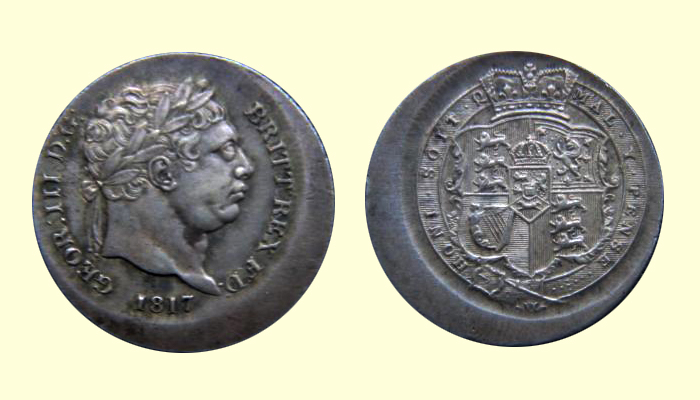
Picture Courtesy of Hus Sulo
Wrong Planchet error: Most mints strike coins of different sizes and denominations, some even strike coins for other countries. Occasionally the wrong sized planchet will find its way into the wrong minting press and so when struck the design will either be to big or too small for the host planchet and you will end up with a coin that has been struck on the wrong planchet. Sometimes the intended size of the planchet may be the same, however the type or composition of the metal used may be different. These errors can be harder to identify as they may look normal but the colour or thickness may be different. Below is a picture of a 2 pence design struck on a 1 penny planchet.
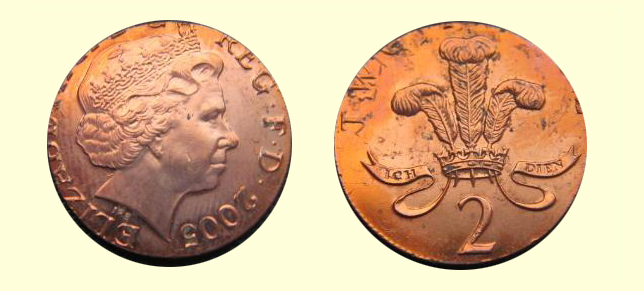
Picture Courtesy of Hus Sulo
Multiple errors: Very rarely a coin may feature more then one of the above major errors. There are several possible multiple error scenarios. Again multiple error coins being so visually different and harder to find, tend to be more actively sought by error collectors.
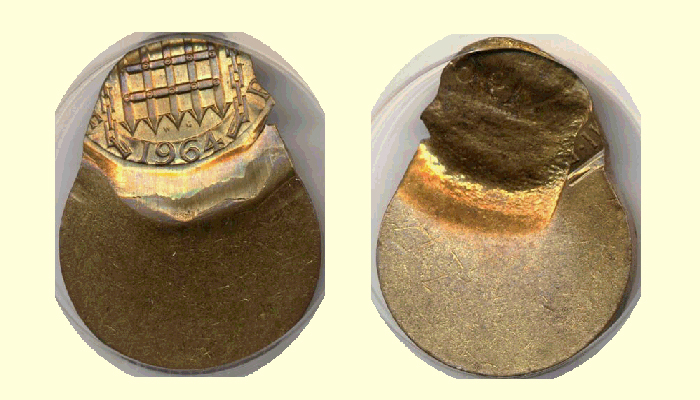
Picture Courtesy of Hus Sulo
The above three pence has been struck about 70% off centre AND displays a partial brockage on the reverse.
